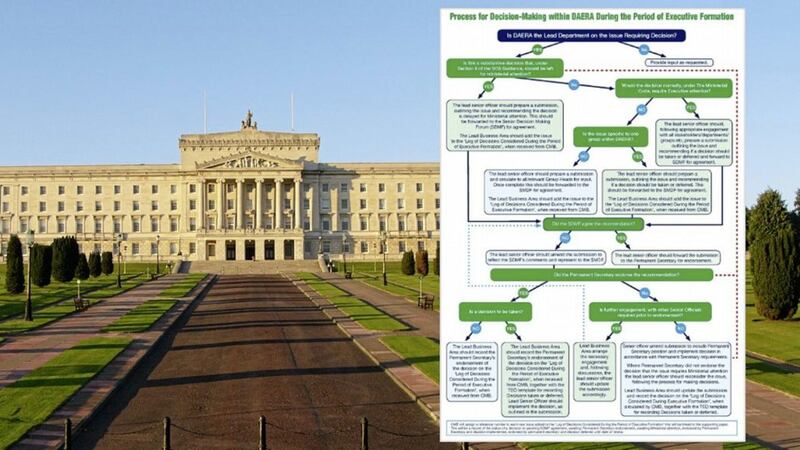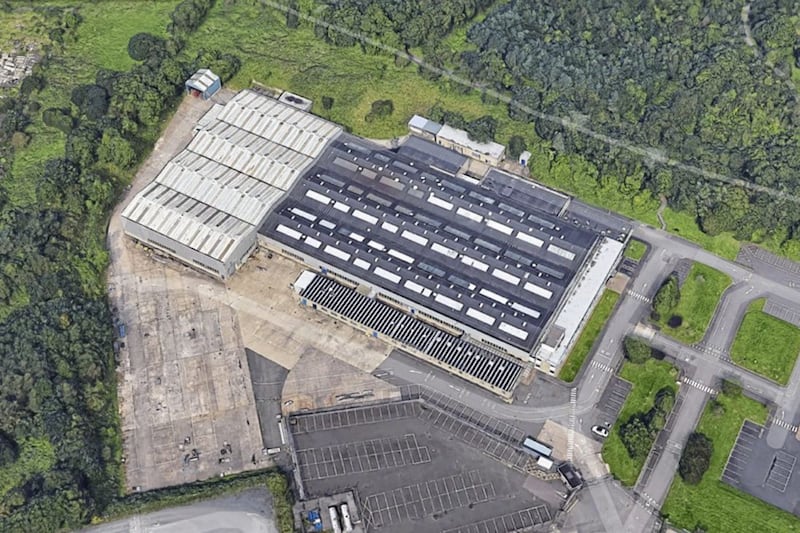A STORMONT department has devised a flowchart on how it will make decisions in the continued absence of a power-sharing executive.
The Department of Agriculture, Environment and Rural Affairs (Daera) created the graphic in the weeks after Westminster passed new laws aimed at clarifying civil servants' powers during Stormont's collapse.
For nearly two years the north has not had a properly functioning devolved government after the executive fell apart in the wake of the RHI scandal.
Civil servants have been left to lead departments in the absence of ministers, but there has been uncertainty over what decisions they can legally make without ministerial sign-off.
In October, legislation was passed at Westminster in a bid to give Stormont officials greater legal clarity on decision-making without local ministers.
It followed a major court ruling earlier in 2018 when a judge ruled civil servants did not have the legal power to approve an incinerator planning application without ministerial approval.
The flowchart was obtained by The Irish News through a Freedom of Information (FOI) request.
Here's the flowchart @daera_ni officials are now using to make decisions in the near two-year absence of devolved government in Northern Ireland.
— Brendan Hughes (@brendanhughes64) January 2, 2019
Full @irish_news story: https://t.co/1kIgZrlG56 @irish_news @politicsIN pic.twitter.com/fLJh5zTmoc
The diagram was finalised on November 30, in the weeks after the Northern Ireland Office issued guidance on the new legislation.
Entitled 'process of decision-making during the period of executive formation', it outlines the questions Daera officials should consider when making decisions.
It shows how officials are required to refer decisions to the Senior Decision Making Forum (SDMF) – a group established on November 30 in response to the new legislation.
SDMF comprises of Daera deputy secretaries and two Grade 5 officials, and its purpose is to make recommendations to the permanent secretary.
The graphic also describes how Daera officials must record decisions in a "log of decisions considered during executive formation" and refers to the Executive Office (TEO) "template for recording decisions taken or deferred".
The log of decisions lists them as "awaiting SDMF agreement", "awaiting permanent secretary endorsement", "awaiting ministerial attention", "endorsed by permanent secretary and decision implemented", and "endorsed by permanent secretary and decision deferred".
A spokesman for the Stormont department said the flowchart was "devised by Daera and is solely for the use of Daera."
Other Stormont departments were unable to outline in similar detail their decision-making processes in the absence of a power-sharing executive, with some referring questions to their FOI teams.
A TEO spokesman said: "In the absence of ministers, decision-makers must continue to act within statutory powers and will take into account both the previous direction of ministers and the public interest.
"Decision-makers will take legal advice where necessary. Every case must be determined on its own merits, and the nuanced judgment between taking a decision now and awaiting the return of ministers must be made on a case-by-case basis."








